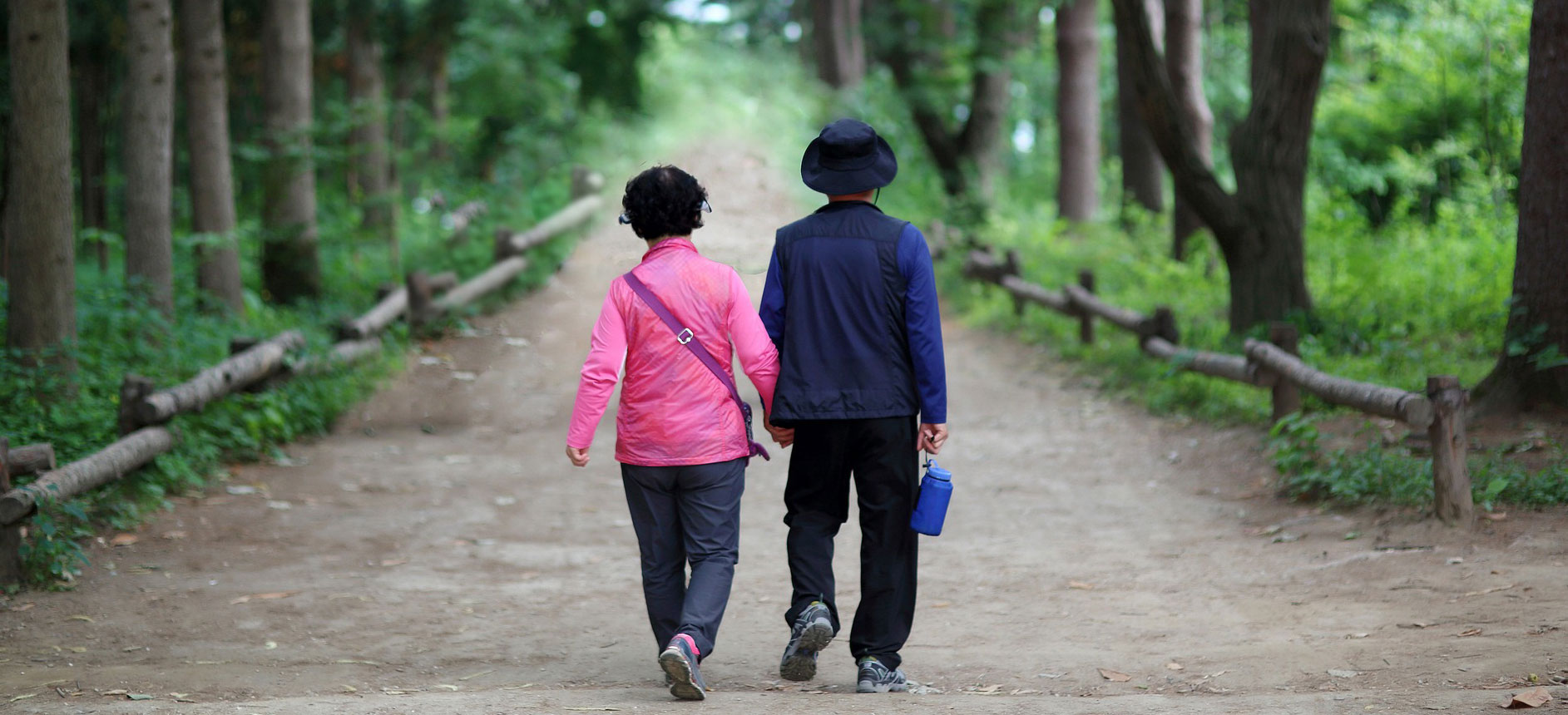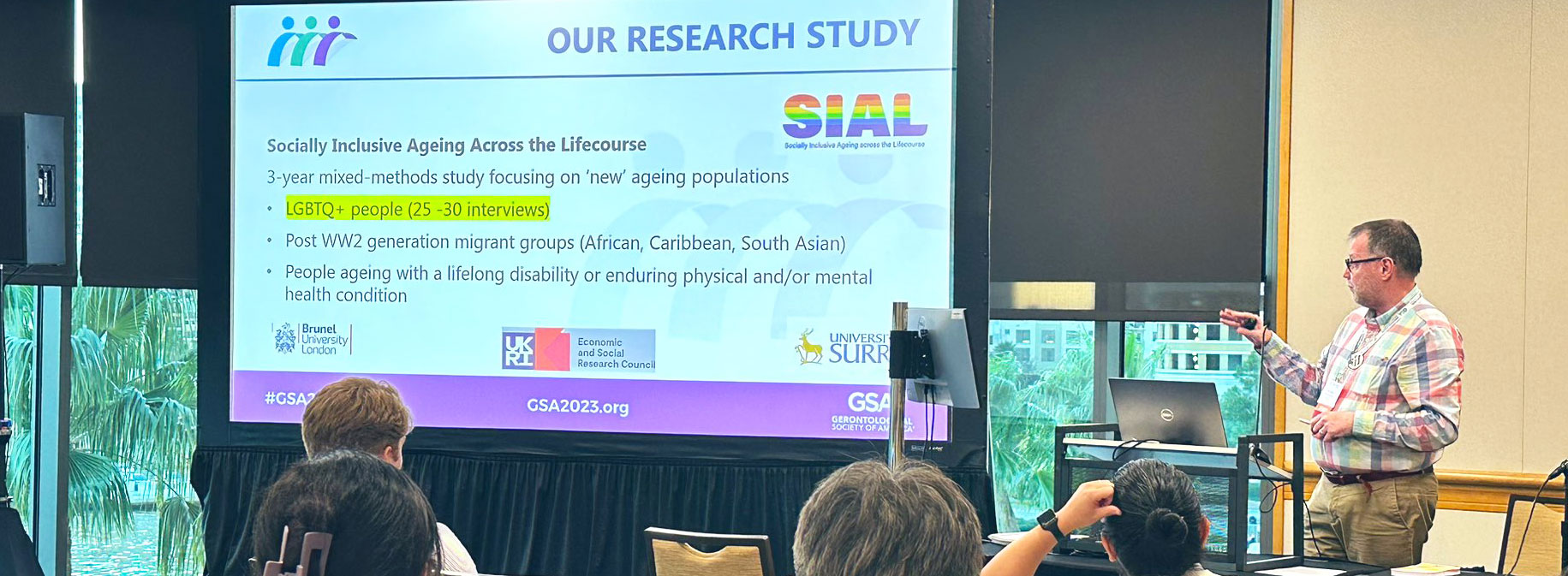About the project
The population of older adults in the UK is changing in various ways. There's a dynamic shift, with a more diverse mix of people growing older. This includes minority groups, those with different social identities (like LGBTQ+ individuals), and people with lifelong disabilities such as cerebral palsy, who are now living longer. We think these 'new ageing' groups make up about 15% (1.3 million people) of the total population aged 65 and older in the UK, or 4.9 million out of the 33 million people aged 40 and above.

Who
We are focussed upon three under-researched new ageing populations:
- Those who identify as LGBTQ+
- Those who identify as belonging to an ethnic minority group
- Those who are ageing with a disability
These groups have characteristics in common including:
- being the focus of stigma and discrimination across their life course to which ageism is added as they grow old
- are under-researched from a Gerontological perspective
- challenge existing stereotypes and images of ageing
- have sparse research, policy, and practice evidence base.
We're looking at all three groups together because they share common experiences of facing negative attitudes and marginalization, but also benefit from positive changes brought about by equality laws. It's important to note that there may be variations within and between these groups, such as differences in family support networks.
Older adults who identify as lesbian, gay, bisexual, transgender, and queer have a social identity that is now recognised and protected by the law. This population is not as easily noticeable, and they were the last to benefit from comprehensive equality laws. Throughout their lives, LGBTQ+ individuals have faced challenges – their sexuality was once considered a crime and even classified as a mental illness. The journey toward legal equality hasn't been straightforward. The partial decriminalization of same-sex acts for men aged 21 in England and Wales in 1967 didn't equate to societal acceptance. The HIV-AIDS epidemic in the early 1980s fuelled hostility towards gay and bisexual individuals. Notably, Section 28 of the 1988 Local Government Act, which prohibited the promotion of homosexuality, exemplifies this hostility. Fortunately, progress has been made, with the repeal of Section 28 in 2003, the introduction of civil partnerships/marriage in 2004 and 2013, and the inclusion of sexual orientation and gender reassignment as protected characteristics in the 2010 Equality Act.

What
Socially Inclusive Ageing across the Life Course (SIAL) extends and expands the parameters of ageing research by applying intersectional and life-course perspectives to evaluate, explain and extend our understanding of late life inequalities in objective (social isolation) and evaluative (loneliness) social health. Utilising life course and intersectional approaches to promote understanding rather than description we have five research questions:
What are the SIAL outcomes for each group?
- Do they vary across groups, within groups and from age/gender matched peers without these identities?
- What factors explain observed SIAL outcomes and variations?
- How do life course and intersectional factors influence SIAL outcomes?
- What is the lived experience of SIAL for each group?
How
Our perspectives:
Life course
A life course approach looks at how time affects outcomes related to the span of a person's life and the different stages they go through. In the fields of epidemiology and public health, researchers use biological, social, and environmental factors (especially in childhood) to understand and explain health outcomes and inequalities in adulthood. When using a life course approach, we examine transitions, which are critical events or turning points in individuals' lives, whether positive or negative. We also look at trajectories, such as their relationship history, throughout their lives. Additionally, we consider how socio-historical circumstances, like the gradual development of equal rights for minority groups, impact their life course.
Intersectionality
Intersectionality is about recognising and understanding the various characteristics and identities that make each of us unique. It looks at how these factors contribute to different outcomes and experiences. The concept, first introduced by Crenshaw, initially explored how race and gender intersected, revealing inequalities or advantages that arose from being both black and female. This highlighted a 'double jeopardy' of disadvantage that studying each identity separately might overlook or make invisible. In our project, we apply intersectional analysis, focusing on four key identity categories: ethnicity, lifelong disability, sexuality, and gender identity. We aim to fill gaps in existing knowledge and move away from viewing later life in a one-size-fits-all manner. Instead, we want to understand how these various aspects of a person's life intersect and impact their experiences in later life.

Our methodology
We will be using a two strand approach to explore social health and connectedness within our three population groups; in so doing, we are utilising both quantitative and qualitative methods.
Quantitative
Two established longitudinal studies are central to our study:
- Understanding Society (US) is a study in the UK that started in 2009 and tracks participants every year. The study involves 40,000 households, including 8,000 from the 1991 British Household Panel Study. It allows us to identify LGBTQ+ individuals and ethnic group membership. In 2015, the study was improved with a boost in the sample representing ethnic groups. US covers various aspects, such as experiences of discrimination, neighborhood information, and loneliness data from 1995 to 2001 and from 2017 onwards. This includes a simple question about loneliness, along with social participation, cultural involvement, political and civic engagement, social networks, and relationship quality.
- The English Longitudinal Study of Ageing (ELSA), established in 2002, includes approximately 10,000 participants with nine waves of data collected at two-yearly intervals. We can identify ethnic minority and LGBTQ+ participants and, via responses to a life history grid included in wave three (2006), those ageing with disability. ELSA has measured loneliness since wave two (2011) and includes both measures recommended by the UK government as part of its loneliness strategy: the three-item UCLA scale and single item question as well social participation data and study specific isolation measure.
Qualitative
Our qualitative study will focus on the lived experience and meaning of SIAL for our three groups. Linking biography with key equalities and other legislation foregrounds the interplay between the life course and public policy. To do this we will be conducting timeline interviews with participants from our three groups; these interviews aim to holistically explore the life stories of our participants as well as examine their social health and connectedness with others. We will be doing two rounds of these interviews lasting around 90-120 minutes each.
When
Our project runs from 2023-2025. We are currently recruiting participants for our study; if you think you fit within our categories, please call 07494647701or email us at sial@brunel.ac.uk
Social media
We have an X (formerly Twitter) page where you can see what we get up to, this is: @SIAL_Brunel